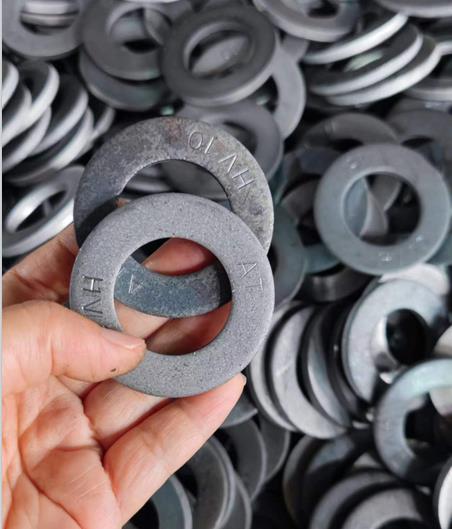flat washer vs spring washer companies
Flat Washers vs. Spring Washers Understanding the Differences and Applications
When it comes to fastening applications, the choice of the right type of washer can significantly impact the performance and durability of a system. Two commonly used types of washers are flat washers and spring washers. Understanding the differences between these two types and their specific applications can help engineers and technicians select the appropriate fastening solutions for their projects.
What Are Flat Washers?
Flat washers are simple, round disks made of various materials, including metal, plastic, or rubber. Their primary function is to distribute the load of a threaded fastener, such as a bolt or nut, over a larger surface area. By doing so, flat washers help to prevent damage to the surface being fastened and reduce the risk of loosening caused by vibration. Flat washers are available in different sizes, thicknesses, and materials, making them suitable for a wide range of applications.
Applications of Flat Washers - Construction In construction projects, flat washers are used in conjunction with bolts and nuts to secure structural elements. They help to ensure even load distribution in foundations, beams, and other critical structural components. - Automotive Flat washers are prevalent in automotive applications, where they minimize stress on components and help maintain the integrity of assemblies subjected to vibration and dynamic loads. - Electronics In electronic devices, flat washers can be used to ensure stable connections between components, providing insulation or protection from corrosion.
What Are Spring Washers?
Spring washers, on the other hand, are designed to provide a spring-like action, which helps to maintain tension and prevent loosening of fasteners due to vibration. They are typically made from spring steel and come in various shapes, with the most common being the star-shaped or wave washer. Spring washers function by exerting a compressive force that holds the fastener in place, countering any forces that may attempt to loosen it.
Applications of Spring Washers - Machinery In machinery applications, spring washers are essential for connections that experience significant movement or vibration. They help maintain a tight fit and prevent the fasteners from loosening during operation. - Marine In marine applications, where exposure to water and salt can cause corrosion and loosening, spring washers provide an added layer of security by holding the fastener in place vigorously. - Aerospace The aerospace industry relies on spring washers for critical components where safety and security are paramount. These washers ensure that connections remain tight under fluctuating pressures and conditions.
flat washer vs spring washer companies

Key Differences Between Flat Washers and Spring Washers
While both flat washers and spring washers serve essential functions in fastening systems, they have distinct differences that make them suitable for different applications.
1. Functionality Flat washers primarily distribute load and protect surfaces from damage, while spring washers are engineered to provide tension and resist loosening caused by vibration. 2. Design Flat washers are simply flat disks, whereas spring washers have a curved or coiled design that allows them to function like a spring, providing a tensioning effect.
3. Material and Construction Both types of washers can be made from various materials, but spring washers are typically made from harder materials like spring steel to ensure they can withstand repeated tensioning.
4. Usage Scenarios Flat washers are often used in applications where load distribution is crucial, while spring washers are more commonly used in environments where vibration and movement are significant concerns.
Conclusion
Choosing between flat washers and spring washers ultimately depends on the specific requirements of a project. Engineers and designers must consider the load distribution needs, environmental factors, and the potential for vibration or movement in the assembly. Flat washers excel in applications where even pressure distribution is required, while spring washers are indispensable for applications that demand resistance to loosening. By understanding the strengths and applications of each type of washer, professionals can enhance the reliability and longevity of their fastening systems.
-
Top Choices for Plasterboard FixingNewsDec.26,2024
-
The Versatility of Specialty WashersNewsDec.26,2024
-
Secure Your ProjectsNewsDec.26,2024
-
Essential Screws for Chipboard Flooring ProjectsNewsDec.26,2024
-
Choosing the Right Drywall ScrewsNewsDec.26,2024
-
Black Phosphate Screws for Superior PerformanceNewsDec.26,2024
-
The Versatile Choice of Nylon Flat Washers for Your NeedsNewsDec.18,2024










